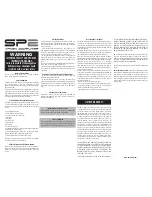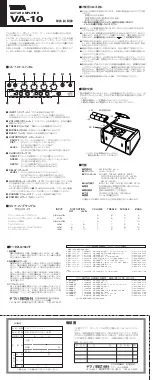
Advanced Micro Instruments, Inc.
Page 8
Using the Analyzer
Introduction:
The AMI model 1000RS analyzer is meant to be used for spot checking gas samples for trace levels of oxygen
contamination. “Trace” means oxygen at levels from zero to about 1000ppm. It does provide percent ranges
but these are intended only to allow for air calibration if desired. It uses a special oxygen sensor that is easily
field replaceable, and it provides a number of features that make the whole process as easy as possible.
The analyzer is shipped with its batteries fully charged. Since NiCd batteries self-discharge, charge it overnight
before using it. When charged the batteries will last for up to 500 hours of continuous use.
The analyzer automatically reads the oxygen level and scales the display so that it always shows the best
resolution. The voltage output and the data log use a preset range (normally 0-100ppm) that can be changed
with the PC interface program. The data log also records over-range excursions up to ten times the range. By
default, it will store data points up to 1000ppm, even though the range is set to 100ppm.
When the analyzer is first turned on the data log function is always off. If you wish to data log you have to manually
turn it on, by pressing and holding the LOG button on the front panel for one second.
Although the analyzer is rugged, and built into a steel case, it should nevertheless be treated carefully. Do not
expose it to rain, or sudden temperature changes. For example, taking it from a heated building to the outdoors
in winter will cause a rapid temperature change that will temporarily upset the temperature compensation, and
it will take a little while for the sensor to come back to equilibrium. Low temperatures below 50°F will slow the
chemical reactions in the sensor and cause it to respond more slowly. If the temperature drops below about 26°F
the sensor can freeze, which will damage it. If it is to be used outside in cold weather, keep the analyzer in a
warm place such as the cab of a truck, and run the sample line into it. Make sure that you run an exhaust line so
that the sample vents outside of the cab of your truck!
For best reliability, transport it in its carrying case and avoid exposing it to extreme temperatures.
Once you have finished taking a measurement, MAKE SURE THE ON/OFF VALVE IS TURNED TO OFF before
disconnecting the sample. Failure to do so will make the sensor very sluggish.











































